-
 Bitcoin
Bitcoin $108,802.0448
0.59% -
 Ethereum
Ethereum $2,556.7655
1.66% -
 Tether USDt
Tether USDt $1.0001
-0.02% -
 XRP
XRP $2.2765
2.15% -
 BNB
BNB $662.6901
1.16% -
 Solana
Solana $151.4936
2.68% -
 USDC
USDC $0.9999
0.00% -
 TRON
TRON $0.2857
0.49% -
 Dogecoin
Dogecoin $0.1704
4.33% -
 Cardano
Cardano $0.5847
1.63% -
 Hyperliquid
Hyperliquid $39.2227
-0.47% -
 Sui
Sui $2.9110
0.60% -
 Bitcoin Cash
Bitcoin Cash $491.8681
1.55% -
 Chainlink
Chainlink $13.4311
2.12% -
 UNUS SED LEO
UNUS SED LEO $9.0273
0.09% -
 Avalanche
Avalanche $18.1653
1.64% -
 Stellar
Stellar $0.2442
2.69% -
 Toncoin
Toncoin $2.8966
5.36% -
 Shiba Inu
Shiba Inu $0.0...01180
2.95% -
 Litecoin
Litecoin $87.8955
1.49% -
 Hedera
Hedera $0.1573
1.30% -
 Monero
Monero $316.6881
0.88% -
 Polkadot
Polkadot $3.3938
1.37% -
 Dai
Dai $0.9999
-0.01% -
 Ethena USDe
Ethena USDe $1.0001
-0.01% -
 Bitget Token
Bitget Token $4.3976
0.08% -
 Uniswap
Uniswap $7.4020
6.83% -
 Pepe
Pepe $0.0...01000
3.22% -
 Aave
Aave $276.6854
2.05% -
 Pi
Pi $0.4586
-0.62%
How to create an NFT series? The whole process from conception to issuance
Creating an NFT series involves conceptualizing a unique theme, designing digital assets, preparing them for blockchain, choosing a platform, minting, and promoting effectively.
May 07, 2025 at 10:01 pm
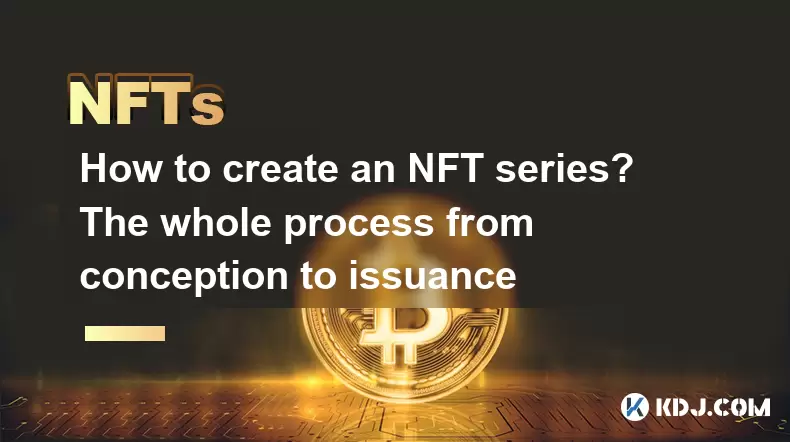
Creating an NFT series involves a series of steps from the initial concept to the final issuance on a blockchain. This process requires creativity, technical knowledge, and an understanding of the NFT market. Let's explore the entire journey of creating an NFT series.
Conceptualizing Your NFT Series
The first step in creating an NFT series is to develop a clear concept. Your concept should be unique and appealing to your target audience. Consider what makes your series stand out in the crowded NFT market. Are you creating art, music, or perhaps a collectible series? Define the theme, style, and purpose of your NFTs.
When conceptualizing, think about the story behind your series. A compelling narrative can enhance the value and appeal of your NFTs. Consider the rarity and uniqueness of each piece within the series. Will there be different tiers or levels of rarity? How will you ensure that each NFT is distinct yet part of a cohesive series?
Designing Your NFTs
Once you have a solid concept, the next step is to design your NFTs. This involves creating the digital assets that will be tokenized. Depending on your series, you might need to work with artists, designers, or use digital tools to create your assets.
If you're creating visual art, consider using software like Adobe Photoshop or Illustrator. For 3D models, tools like Blender can be useful. Ensure that your designs are high-quality and meet the standards expected by NFT collectors. Pay attention to details such as resolution, color accuracy, and overall aesthetics.
Preparing Your NFTs for Minting
Before you can mint your NFTs, you need to prepare them for the blockchain. This involves converting your digital assets into a format compatible with the blockchain you'll be using. Most commonly, NFTs are minted on Ethereum, but other blockchains like Binance Smart Chain or Flow are also popular.
Convert your files into a suitable format, such as PNG or MP4 for images and videos, respectively. Ensure that the file sizes are optimized to reduce gas fees during minting. You may also need to create metadata files that describe each NFT, including its name, description, and any other relevant information.
Choosing a Blockchain and Platform
Selecting the right blockchain and platform is crucial for the success of your NFT series. Ethereum is the most popular choice due to its established ecosystem and wide adoption. However, other blockchains like Solana or Tezos offer lower transaction fees and faster processing times.
For the platform, consider using marketplaces like OpenSea, Rarible, or Foundation. Each platform has its own set of features and fees. Research the pros and cons of each to determine which best suits your needs. Some platforms allow you to create your own smart contract, while others provide a more user-friendly interface for minting NFTs.
Minting Your NFTs
Minting is the process of creating your NFTs on the blockchain. This involves uploading your digital assets and metadata to the chosen platform and executing the minting transaction. Here's a detailed guide on how to mint your NFTs:
- Set up a wallet: You'll need a cryptocurrency wallet compatible with the blockchain you're using. For Ethereum, popular options include MetaMask or Trust Wallet. Ensure your wallet is funded with the necessary cryptocurrency to cover gas fees.
- Connect your wallet to the platform: Navigate to the platform you've chosen and connect your wallet. This usually involves clicking a "Connect Wallet" button and following the prompts.
- Upload your assets: Follow the platform's instructions to upload your digital assets and metadata. Ensure that all files are correctly formatted and sized.
- Configure your NFT settings: Set the name, description, and any other attributes for your NFTs. Decide on the number of editions, if applicable, and set the price if you're selling them immediately.
- Mint your NFTs: Once everything is set up, initiate the minting process. This will involve confirming a transaction on your wallet, which will incur gas fees. Wait for the transaction to be processed and confirmed on the blockchain.
Launching and Promoting Your NFT Series
After minting, it's time to launch and promote your NFT series. Effective marketing is crucial to attract buyers and build a community around your NFTs. Start by creating a website or landing page for your series, where you can showcase your NFTs and provide more information about them.
Utilize social media platforms like Twitter, Instagram, and Discord to reach potential buyers. Engage with the NFT community by participating in discussions, sharing updates about your series, and collaborating with other creators. Consider offering exclusive previews or early access to your NFTs to build anticipation.
Managing Sales and Distribution
Once your NFTs are live, you'll need to manage sales and distribution. Monitor the performance of your NFTs on the marketplace and adjust your strategy as needed. Keep track of sales, royalties, and any secondary market activity.
Some platforms allow you to set royalties, which means you'll earn a percentage of the sale price every time your NFT is resold. This can provide a passive income stream over time. Ensure that you're aware of the platform's policies regarding royalties and how they're distributed.
Engaging with Your Community
Building and maintaining a community around your NFT series is essential for long-term success. Engage with your collectors and fans through regular updates, AMAs (Ask Me Anything sessions), and exclusive events. Listen to feedback and consider incorporating it into future projects.
A strong community can help drive demand for your NFTs and increase their value. Encourage collectors to share their experiences and showcase their NFTs on social media. This can create a positive feedback loop that attracts more buyers and enhances the reputation of your series.
Frequently Asked Questions
Q: Can I create an NFT series without any coding knowledge?
A: Yes, you can create an NFT series without coding knowledge by using user-friendly platforms like OpenSea or Rarible. These platforms provide interfaces that guide you through the minting process without requiring you to write any code.
Q: How do I determine the price for my NFTs?
A: Pricing your NFTs depends on various factors, including the uniqueness of your series, the demand in the market, and the perceived value of your work. Research similar NFTs to gauge the market, and consider starting with a lower price to attract initial buyers and build momentum.
Q: What are the legal considerations when creating an NFT series?
A: When creating an NFT series, ensure that you have the rights to the digital assets you're tokenizing. Be aware of copyright laws and any potential infringement. It's also important to understand the terms of service of the platform you're using, as they may have specific requirements or restrictions.
Q: How can I ensure the security of my NFTs?
A: To ensure the security of your NFTs, use a reputable wallet and keep your private keys secure. Be cautious of phishing attempts and only interact with trusted platforms. Regularly monitor your NFTs and report any suspicious activity to the platform's support team.
Disclaimer:info@kdj.com
The information provided is not trading advice. kdj.com does not assume any responsibility for any investments made based on the information provided in this article. Cryptocurrencies are highly volatile and it is highly recommended that you invest with caution after thorough research!
If you believe that the content used on this website infringes your copyright, please contact us immediately (info@kdj.com) and we will delete it promptly.
- Litecoin Breakout Watch: What Traders Need to Know Now
- 2025-07-06 16:50:13
- Bitcoin, Solana, Ethereum: Decoding the Latest Buzz on the Blockchain
- 2025-07-06 16:50:13
- Widnes Resident's 50p Could Be Your Ticket to Easy Street: Rare Coin Mania!
- 2025-07-06 16:55:13
- Bitcoin, Solaris Presale, and Token Rewards: What's the Buzz?
- 2025-07-06 16:55:13
- Ethereum Under Pressure: Price Drop Amid Global Uncertainties
- 2025-07-06 17:00:13
- XRP, SEC Case, and Prosperity: A New Era for XRP Holders?
- 2025-07-06 17:10:13
Related knowledge
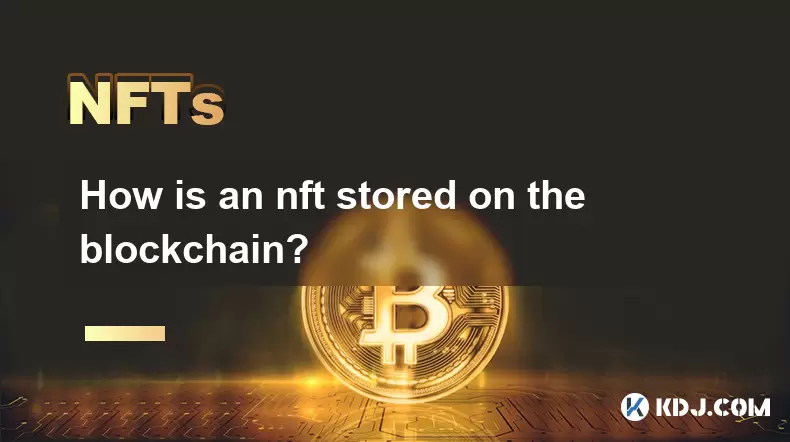
How is an nft stored on the blockchain?
Jul 01,2025 at 04:07am
How Is an NFT Stored on the Blockchain?Non-Fungible Tokens (NFTs) have revolutionized how digital assets are owned, verified, and transferred. Understanding how an NFT is stored on the blockchain provides clarity on its uniqueness, immutability, and traceability. Understanding the Basic Structure of an NFTAn NFT is a unique token that represents ownersh...
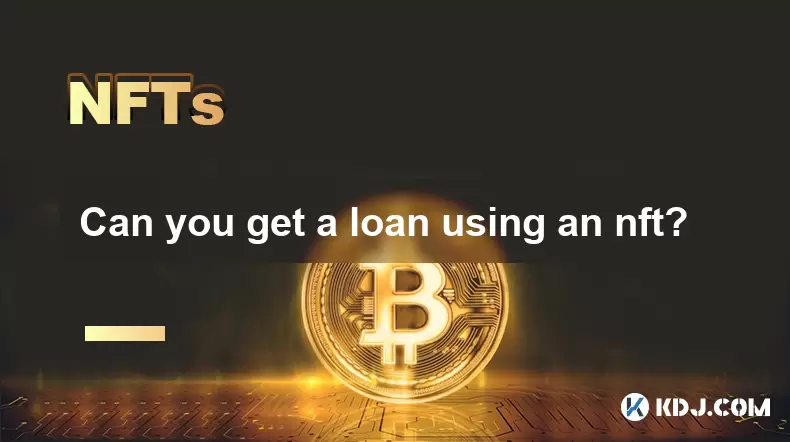
Can you get a loan using an nft?
Jul 05,2025 at 07:32pm
Understanding the Concept of NFT-Based LoansThe idea of using an NFT as collateral for a loan has gained traction in the decentralized finance (DeFi) space. NFTs, or non-fungible tokens, represent unique digital assets on the blockchain. While they are often associated with digital art, collectibles, and virtual real estate, their utility is expanding i...
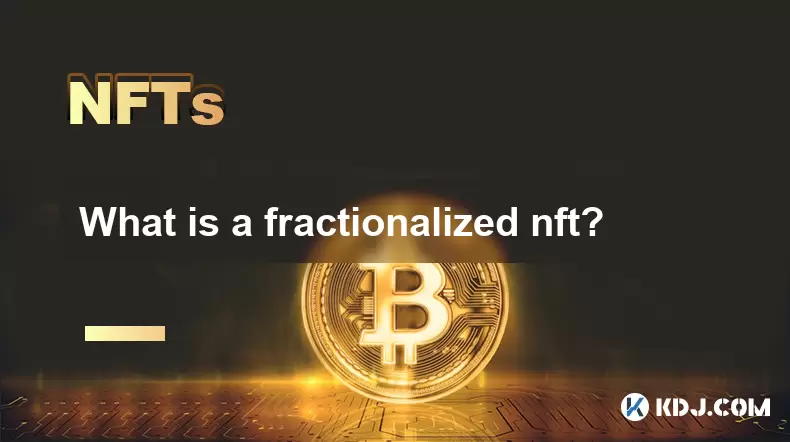
What is a fractionalized nft?
Jul 06,2025 at 10:50am
Understanding the Concept of Fractionalized NFTsA fractionalized NFT refers to a process where a single non-fungible token (NFT) is divided into multiple smaller, tradable parts. These parts represent fractional ownership of the original NFT. This innovation allows high-value NFTs to be accessible to a broader audience by enabling shared ownership. Inst...
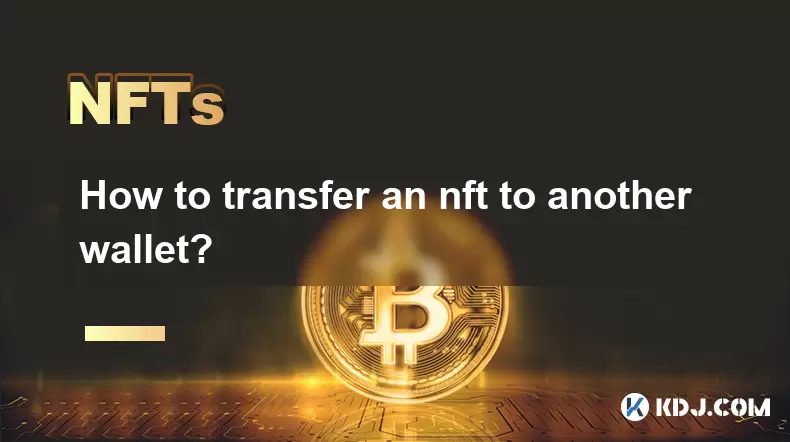
How to transfer an nft to another wallet?
Jul 01,2025 at 10:21am
Understanding the Basics of NFT TransfersTransferring an NFT (Non-Fungible Token) from one wallet to another is a common operation in the blockchain space. Before proceeding, it's crucial to understand what an NFT represents: a unique digital asset stored on a blockchain, typically Ethereum or other compatible chains like Binance Smart Chain or Solana. ...
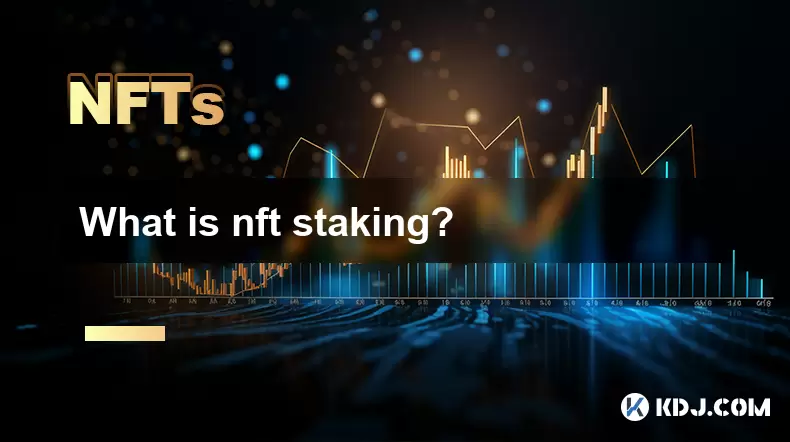
What is nft staking?
Jul 05,2025 at 07:16pm
Understanding the Concept of NFT StakingNFT staking refers to the process where users lock up their non-fungible tokens (NFTs) in a blockchain-based platform or smart contract to earn rewards. This mechanism is similar to traditional cryptocurrency staking, but instead of locking fungible tokens like ETH or SOL, users stake unique digital assets represe...
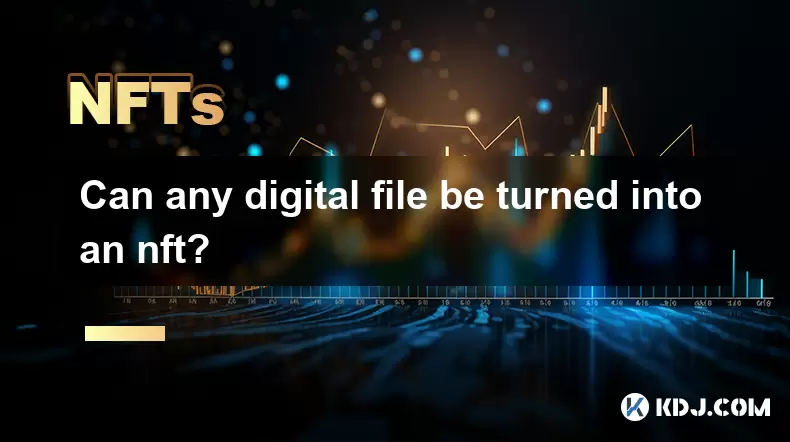
Can any digital file be turned into an nft?
Jul 01,2025 at 07:00am
Understanding the Concept of NFTsAn NFT (Non-Fungible Token) is a unique digital certificate of ownership stored on the blockchain. Unlike cryptocurrencies such as Bitcoin or Ethereum, which are fungible and interchangeable, NFTs represent one-of-a-kind assets that cannot be replicated or replaced. These tokens can represent various types of digital fil...

How is an nft stored on the blockchain?
Jul 01,2025 at 04:07am
How Is an NFT Stored on the Blockchain?Non-Fungible Tokens (NFTs) have revolutionized how digital assets are owned, verified, and transferred. Understanding how an NFT is stored on the blockchain provides clarity on its uniqueness, immutability, and traceability. Understanding the Basic Structure of an NFTAn NFT is a unique token that represents ownersh...

Can you get a loan using an nft?
Jul 05,2025 at 07:32pm
Understanding the Concept of NFT-Based LoansThe idea of using an NFT as collateral for a loan has gained traction in the decentralized finance (DeFi) space. NFTs, or non-fungible tokens, represent unique digital assets on the blockchain. While they are often associated with digital art, collectibles, and virtual real estate, their utility is expanding i...

What is a fractionalized nft?
Jul 06,2025 at 10:50am
Understanding the Concept of Fractionalized NFTsA fractionalized NFT refers to a process where a single non-fungible token (NFT) is divided into multiple smaller, tradable parts. These parts represent fractional ownership of the original NFT. This innovation allows high-value NFTs to be accessible to a broader audience by enabling shared ownership. Inst...

How to transfer an nft to another wallet?
Jul 01,2025 at 10:21am
Understanding the Basics of NFT TransfersTransferring an NFT (Non-Fungible Token) from one wallet to another is a common operation in the blockchain space. Before proceeding, it's crucial to understand what an NFT represents: a unique digital asset stored on a blockchain, typically Ethereum or other compatible chains like Binance Smart Chain or Solana. ...

What is nft staking?
Jul 05,2025 at 07:16pm
Understanding the Concept of NFT StakingNFT staking refers to the process where users lock up their non-fungible tokens (NFTs) in a blockchain-based platform or smart contract to earn rewards. This mechanism is similar to traditional cryptocurrency staking, but instead of locking fungible tokens like ETH or SOL, users stake unique digital assets represe...

Can any digital file be turned into an nft?
Jul 01,2025 at 07:00am
Understanding the Concept of NFTsAn NFT (Non-Fungible Token) is a unique digital certificate of ownership stored on the blockchain. Unlike cryptocurrencies such as Bitcoin or Ethereum, which are fungible and interchangeable, NFTs represent one-of-a-kind assets that cannot be replicated or replaced. These tokens can represent various types of digital fil...
See all articles

























































































